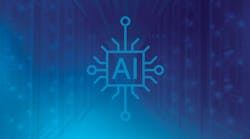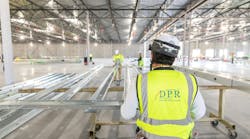Data Center Insights: Nicole Dierksheide of Kohler Co.
The Data Center Frontier Executive Roundtable features insights from industry executives with lengthy experience in the data center industry. Here’s a look at the insights from Nicole Dierksheide, Director - Category Large Engines>600KW, Kohler Co.
Nicole Dierksheide is the global category leader for Kohler’s Data Center product line. She has broad experience over her 25+ year career that spans from engineering subsystems on locomotives to marketing test and measurement equipment. She has been with Kohler Co. for more than 13 years, focused on offering energy resilient solutions.
Nicole holds a degree in electrical engineering from the University of Arizona and uses her technical expertise to work with customers on finding the optimal solution for their needs. She is a sustainability champion at Kohler Co. and passionate about driving greener actions both at work and in her personal life.
Here's the full text of Nicole Dierksheide's insights from our Executive Roundtable:
Data Center Frontier: After this landmark year of unprecedented anticipation for artificial intelligence and machine learning (AI/ML) technologies amid escalating requirements in the traditional cloud, the data center sector is poised to experience even greater urgency of demand. As we proceed into a widely forecasted “new twenty-year cycle" of growth, what will be the most key factors for enabling the industry’s ability to meet such demand next year and beyond? What persistent challenges stand most to inhibit this ability?
Nicole Dierksheide, Kohler: A landmark year indeed! When it comes to the anticipation of AI and all that it brings, Kohler is not alone in evaluating current capabilities and future enhancements to better serve our global customer base.
Of course, we will be keeping a close eye on the inevitable power uptick that the development and implementation that AI technologies will create in the areas of data management, processing and accessibility and how it will impact our industry.
We have read reports that AI applications will consume more than 3X the power than traditional enterprise applications and the role that back up power will play to support these increases will be critical to minimizing downtime and interruptions.
Of course, challenges will be part of the growth process. Adequate security will continue to be a persistent challenge as AI becomes more and more integrated.
In addition, compatibility between newer and older technologies is a potential area of concern.
Data Center Frontier: Especially in dense urban markets facing slim availability of critical land and power stakes, "adaptive reuse" of vacant office, retail and other commercial real estate properties for data center design and construction development remains a gathering trend in North America. For investors and providers thinking of adapting a site for reuse as data centers, what makes a particular property a better or worse candidate? And what are the relative considerations for brownfield vs. retrofit development in such cases?
Nicole Dierksheide, Kohler: There are many individualized factors that go into determining whether or not a property will be a good candidate for reuse as a data center.
Key factors to consider are power infrastructure, location, connectivity, environmental implications, support of sustainability practices, and of course security.
These types of decisions need to be evaluated on a case-by-case basis as there are pros and cons to both scenarios.
For brownfield properties, you are working with a shell that could already house key elements that will be needed in the reuse project, and development might be faster because you are dealing with an existing structure. However, you are also at the mercy of what existed before and the property may need repairs, updates, etc.
You could argue that brownfield properties are more sustainable because you would not have to go through the process of constructing a new building, taking away more natural landscaping.
For retrofit properties, advantages are that the property is customizable and new with the ability to incorporate the latest technology and infrastructure available. However, challenges can include cost, long development times and issues with permitting and approvals that accompany any new construction.
In either case, we must do a better job of educating the public on the importance of data centers and the necessary services they provide.
Data Center Frontier: The range of available and proposed technologies to remediate looming need for sustainable onsite energy generation at large data center campuses ranges from still barely-within-reach SMR and green hydrogen speculation, to possibly more readily feasible and pragmatic means including renewable microgrids, clean fuel cells, and more efficient generator and battery practices and technologies. Which onsite power generation solutions present the best outlook for investors, developers and providers seeking to balance short- and long-term ROI considerations with the industry’s clear and present drive toward sustainability?
Nicole Dierksheide, Kohler: Maintenance of a product is a key component for investors to analyze when evaluating ROI and its attachment with environmentally friendly best practices in the back up power space.
Kohler recently launched a hydrogen fuel cell product line to support more sustainable energy solutions. As access to hydrogen increases, power systems with solid polymer electrolyte (PEM) technology provide the same level of performance as conventional backup solutions with zero emissions at the point of use, alleviating the permitting challenges experienced by many data center operators today.
Additionally, Kohler also recently launched the Kohler Conscious Care Program which features fuel-saving No-Load Exercises that enable a diesel generator’s regular monthly exercise to be run without load and still avoid any "wet stacking."
This allows customers to reduce GHG emissions by 40% per year compared to loaded cycles, while also delivering a 44% reduction in fuel consumption – therefore meeting regulations and reducing fuel costs.
The program’s four-month Extended Exercise goes even further, allowing customers to perform the test every four months with no load, reducing total GHG emissions by 69% and fuel consumption by 71%.
In addition, the Conscious Care maintenance program enables an operating method that reduces noise emissions and appearance of black smoke at cold start.
In addition to needing to educate the data center community on the availability and effectiveness of more green energy solutions, we could also do a better job of sharing this information. Some of the industry’s major players have begun to incorporate more sustainable practices into their building process.
For example, Microsoft has started looking at using smaller nuclear reactors to power data centers as an alternative. If the use of nuclear technology proves viable for Microsoft and they develop an effective data center design, sharing that knowledge with the industry will advance efforts to reduce emissions.
Data Center Frontier: For providers of equipment to the North American data center industry looking to bring supply chains for critical infrastructure closer to their customers, what are the main opportunities going into 2024, geographical and otherwise, for an expansion of U.S. manufacturing capabilities?
Nicole Dierksheide, Kohler: There are many different factors to consider when exploring areas of opportunity for expansion in North America for data center equipment providers.
A few factors that are potential markers for growth and expansion include the identification of which markets are offering incentives or chairing concentrated initiatives to bring better connectivity to their communities.
Additionally, looking beyond major metropolitan hubs is another opportunity for growth, as working from home and digital integration into everyday lives shows no sign of slowing down.
About the Author
Matt Vincent
A B2B technology journalist and editor with more than two decades of experience, Matt Vincent is Editor in Chief of Data Center Frontier.



